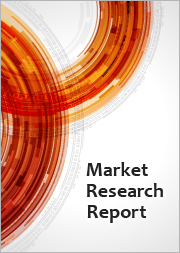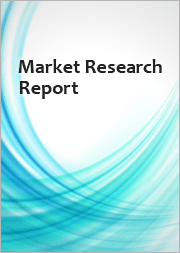
|
시장보고서
상품코드
1772305
세계의 바이오 기반 섬유 시장 - 규모, 점유율, 동향 분석 보고서 : 원료별, 용도별, 지역별, 부문 예측(2025-2030년)Bio-based Textiles Market Size, Share & Trends Analysis Report By Source Material (Plant-Based, Animal-Based, Microbial/Bioengineered), By Application (Apparel, Home Textiles, Industrial Textiles), By Region, And Segment Forecasts, 2025 - 2030 |
||||||
세계의 바이오 기반 섬유 시장 성장과 동향 :
Grand View Research, Inc.의 최신 보고서에 따르면 세계의 바이오 섬유 시장 규모는 2030년까지 813억 1,000만 달러에 이를 것으로 예측되고, 2025년부터 2030년까지 CAGR 8.5%를 보일 것으로 예측됩니다.
바이오 기반 섬유는 기존의 석유 기반 소재를 대체하는 지속 가능한 대체 소재를 제공함으로써 세계의 섬유 산업에 혁명을 가져왔습니다.
바이오 섬유 제품에 대한 수요는 몇 가지 요인이 겹쳐 급속히 증가하고 있습니다. 또한 유럽, 북미, 아시아의 일부 규제기관은 패션과 섬유산업에서 환경기준의 엄격화를 추진하고 있습니다.
이노베이션은 이 시장개발의 중요한 원동력으로 기업은 신섬유와 신소재를 개발하기 위해 연구개발에 많은 투자를 하고 있습니다. 균사를 기반으로 한 가죽 대체 소재부터 PLA 및 재생 단백질 섬유와 같은 바이오플라스틱에 이르기까지 지속 가능한 섬유 개발의 여지는 넓어지고 있습니다. 또한 신기술로 이러한 소재의 성능과 미관을 향상시켜 고급 패션, 스포츠웨어, 가정용 가구, 산업용도에 적합합니다. 생명 공학 기업, 전통적인 섬유 제조 업체 및 패션 브랜드 간의 파트너십은 이러한 혁신의 상업화를 가속화하고 있습니다.
앞으로 바이오 섬유산업은 소비자의 가치관 변화, 규제 당국의 지원, 지속적인 기술 혁신에 견인되어 꾸준히 성장할 것으로 예측됩니다. 확장성, 비용 경쟁력, 원료 조달 측면에서 과제는 남아 있으며 시장 기세는 장기적인 잠재력을 시사합니다. 지속가능성이 세계 공급망의 핵심 주제가 되는 가운데, 바이오 섬유는 단순한 대체품이 아니라 보다 책임 있는 강인한 섬유 산업을 위한 중요한 솔루션으로 자리매김하고 있습니다.
바이오 섬유 시장 보고서 하이라이트
- 식물 유래 부문은 2024년 63.9%의 최대 수익 점유율로 시장을 선도했습니다.
- 의류 분야는 지속 가능한 패션에 대한 소비자의 높은 수요와 의류에 대한 바이오 섬유의 광범위한 응용에 의해 2024년 51.2%의 최대 수익 점유율로 시장을 선도했습니다.
- 아시아태평양은 풍부한 원재료 가용성, 대규모 섬유 제조거점, 환경 의식이 높은 소비자 인구 증가로 2024년 약 47.3%의 최대 수익 점유율을 획득하여 시장을 독점했습니다.
목차
제1장 조사 방법과 범위
제2장 주요 요약
제3장 바이오 기반 섬유 시장의 변수, 동향, 범위
- 시장 계통/보조 시장 전망
- 업계 밸류체인 분석
- 판매 채널 분석
- 규제 프레임워크
- 애널리스트의 시점
- 규제와 기준
- 시장 역학
- 시장 성장 촉진요인 분석
- 시장 성장 억제요인 분석
- 업계의 기회
- 업계의 과제
- 비즈니스 환경 도구 분석 : 바이오 섬유 시장
- Porter's Five Forces 분석
- PESTLE 분석
- 시장 혼란 분석
제4장 바이오 기반 섬유 시장 : 원료별 추정 및 동향 분석
- 중요한 포인트
- 원료 변동 분석과 시장 점유율, 2024년 및 2030년
- 세계의 바이오 기반 섬유 시장(원료별, 2018-2030년)
- 식물 기반
- 동물 기반
- 미생물 및 바이오엔지니어링
- 기타
제5장 바이오 기반 섬유 시장 : 용도별 추정 및 동향 분석
- 중요한 포인트
- 용도변동 분석과 시장 점유율, 2024년 및 2030년
- 세계의 바이오 기반 섬유 시장(용도별, 2018-2030년)
- 옷
- 가정용 섬유
- 산업용 섬유
- 기타
제6장 바이오 기반 섬유 시장 : 지역별 추정 및 동향 분석
- 중요한 포인트
- 지역별 시장 점유율 분석, 2024년 및 2030년
- 북미
- 원재료별, 2018-2030년
- 용도별, 2018-2030년
- 미국
- 캐나다
- 멕시코
- 유럽
- 원재료별, 2018-2030년
- 용도별, 2018-2030년
- 독일
- 영국
- 프랑스
- 이탈리아
- 스페인
- 아시아태평양
- 원재료별, 2018-2030년
- 용도별, 2018-2030년
- 중국
- 인도
- 일본
- 한국
- 중남미
- 원재료별, 2018-2030년
- 용도별, 2018-2030년
- 중동 및 아프리카
- 원재료별, 2018-2030년
- 용도별, 2018-2030년
제7장 공급자 인텔리전스
- 클라리치 매트릭스
- 참여 모델
- 협상 전략
- 조달 모범 사례
- 벤더 선정 기준
제8장 경쟁 구도
- 주요 기업, 최근 동향, 업계에 미치는 영향
- 경쟁의 분류
- 기업의 시장 포지셔닝 분석
- 기업 히트맵 분석
- 전략 매핑, 2024년
- 기업 목록
- NatureWorks LLC
- BASF SE
- MycoWorks
- Bolt Threads
- Lenzing AG
- Teijin Limited.
- Von Holzhausen.
- Toray Industries, Inc.
- SPINNOVA
- Ecofibre Limited
Bio-based Textiles Market Growth & Trends:
The global bio-based textiles market size is anticipated to reach USD 81.31 billion by 2030 and is projected to grow at a CAGR of 8.5% from 2025 to 2030, according to a new report by Grand View Research, Inc. Bio-based textiles are revolutionizing the global textile industry by offering sustainable alternatives to conventional petroleum-based materials. These textiles are made from renewable biological resources such as plant fibers (like organic cotton, hemp, flax, and bamboo), animal proteins (like wool and silk), and innovative sources such as mycelium (fungi) and biopolymers. As environmental concerns over carbon emissions, plastic waste, and water pollution rise, bio-based textiles present a more eco-conscious option for manufacturers and consumers alike, aligning with the principles of the circular economy and low-impact production.
The demand for bio-based textiles is increasing rapidly due to several converging factors. Consumers, particularly in developed markets, are becoming more aware of the environmental footprint of their clothing choices and are actively seeking sustainable alternatives. Additionally, regulatory bodies across Europe, North America, and parts of Asia are pushing for stricter environmental standards in the fashion and textile industries. This is encouraging brands to transition toward bio-based materials that are biodegradable, renewable, and less resource-intensive.
Innovation is a key driver in this market, with companies investing heavily in R&D to develop new fibers and materials. From mycelium-based leather alternatives to bioplastics like PLA and recycled protein fibers, the scope for sustainable textile development is broadening. Emerging technologies are also improving the performance and aesthetics of these materials, making them suitable for high-end fashion, sportswear, home furnishings, and industrial applications. Partnerships between biotechnology firms, traditional textile manufacturers, and fashion brands are accelerating the commercialization of these innovations.
Looking ahead, the bio-based textiles industry is expected to grow steadily, driven by shifting consumer values, regulatory support, and continued technological breakthroughs. While challenges remain in terms of scalability, cost competitiveness, and raw material sourcing, the market's momentum suggests long-term potential. As sustainability becomes a central theme in global supply chains, bio-based textiles are positioned not just as an alternative but as a key solution for a more responsible and resilient textile industry.
Bio-based Textiles Market Report Highlights:
- The plant-based segment led the market with the largest revenue share of 63.9% in 2024, due to its wide availability, established supply chains, and consumer preference for natural, eco-friendly materials.
- The apparel segment led the market with the largest revenue share of 51.2% in 2024, due to high consumer demand for sustainable fashion and widespread application of bio-based textiles in clothing.
- Asia Pacific dominated the market with the largest revenue share of about 47.3% in 2024, due to abundant raw material availability, a large textile manufacturing base, and a growing eco-conscious consumer population.
Table of Contents
Chapter 1. Methodology and Scope
- 1.1. Research Methodology
- 1.2. Research Scope & Assumptions
- 1.3. Information Procurement
- 1.3.1. Purchased Database
- 1.3.2. GVR's Internal Database
- 1.3.3. Secondary Sources & Third-Party Perspectives
- 1.3.4. Primary Research
- 1.4. Information Analysis
- 1.4.1. Data Analysis Models
- 1.5. Market Formulation & Data Visualization
- 1.6. List of Data Sources
Chapter 2. Executive Summary
- 2.1. Market Outlook, 2024 (USD Billion)
- 2.2. Segmental Outlook
- 2.3. Competitive Insights
Chapter 3. Bio-based Textiles Market Variables, Trends & Scope
- 3.1. Market Lineage/Ancillary Market Outlook
- 3.2. Industry Value Chain Analysis
- 3.2.1. Sales Channel Analysis
- 3.3. Regulatory Framework
- 3.3.1. Analyst Perspective
- 3.3.2. Regulations & Standards
- 3.4. Market Dynamics
- 3.4.1. Market Driver Analysis
- 3.4.2. Market Restraint Analysis
- 3.4.3. Industry Opportunities
- 3.4.4. Industry Challenges
- 3.5. Business Environmental Tools Analysis: Bio-based Textiles Market
- 3.5.1. Porter's Five Forces Analysis
- 3.5.1.1. Bargaining Power of Suppliers
- 3.5.1.2. Bargaining Power of Buyers
- 3.5.1.3. Threat of Substitution
- 3.5.1.4. Threat of New Entrants
- 3.5.1.5. Competitive Rivalry
- 3.5.2. PESTLE Analysis
- 3.5.2.1. Political Landscape
- 3.5.2.2. Economic Landscape
- 3.5.2.3. Social Landscape
- 3.5.2.4. Technology Landscape
- 3.5.2.5. Environmental Landscape
- 3.5.2.6. Legal Landscape
- 3.5.1. Porter's Five Forces Analysis
- 3.6. Market Disruption Analysis
Chapter 4. Bio-based Textiles Market: Source Material Estimates & Trend Analysis
- 4.1. Key Takeaways
- 4.2. Source Material Movement Analysis & Market Share, 2024 & 2030
- 4.3. Global Bio-based Textiles Market, By Source Material, 2018 - 2030 (USD Million)
- 4.4. Plant-Based
- 4.4.1. Bio-based Textiles Market Estimates And Forecasts, by Plant-Based, 2018 - 2030 (USD Million)
- 4.5. Animal-Based
- 4.5.1. Bio-based Textiles Market Estimates And Forecasts, by Animal-Based, 2018 - 2030 (USD Million)
- 4.6. Microbial/Bioengineered
- 4.6.1. Bio-based Textiles Market Estimates And Forecasts, by Microbial/Bioengineered, 2018 - 2030 (USD Million)
- 4.7. Others
- 4.7.1. Bio-based Textiles Market Estimates And Forecasts, by Others, 2018 - 2030 (USD Million)
Chapter 5. Bio-based Textiles Market: Application Estimates & Trend Analysis
- 5.1. Key Takeaways
- 5.2. Application Movement Analysis & Market Share, 2024 & 2030
- 5.3. Global Bio-based Textiles Market, By Application, 2018 - 2030 (USD Million)
- 5.4. Apparel
- 5.4.1. Bio-based Textiles Market Estimates And Forecasts, for Apparel, 2018 - 2030 (USD Million)
- 5.5. Home Textiles
- 5.5.1. Bio-based Textiles Market Estimates And Forecasts, for Home Textiles, 2018- (USD Million)
- 5.6. Industrial Textiles
- 5.6.1. Bio-based Textiles Market Estimates And Forecasts, for Industrial Textiles, 2018- (USD Million)
- 5.7. Others
- 5.7.1. Bio-based Textiles Market Estimates And Forecasts, for Others, 2018- (USD Million)
Chapter 6. Bio-based Textiles Market: Regional Estimates & Trend Analysis
- 6.1. Key Takeaways
- 6.2. Regional Market Share Analysis, 2024 & 2030
- 6.3. North America
- 6.3.1. North America Bio-based Textiles Market Estimates And Forecasts, 2018 - 2030 (USD Million)
- 6.3.2. North America Bio-based Textiles Market Estimates And Forecasts, By Source Material, 2018 - 2030 (USD Million)
- 6.3.3. North America Bio-based Textiles Market Estimates And Forecasts, By Application, 2018 - 2030 (USD Million)
- 6.3.4. U.S.
- 6.3.4.1. U.S. Bio-based Textiles Market Estimates And Forecasts, 2018 - 2030 (USD Million)
- 6.3.4.2. U.S. Bio-based Textiles Market Estimates And Forecasts, By Source Material, 2018 - 2030 (USD Million)
- 6.3.4.3. U.S. Bio-based Textiles Market Estimates And Forecasts, By Application, 2018 - 2030 (USD Million)
- 6.3.5. Canada
- 6.3.5.1. Canada Bio-based Textiles Market Estimates And Forecasts, 2018 - 2030 (USD Million)
- 6.3.5.2. Canada Bio-based Textiles Market Estimates And Forecasts, By Source Material, 2018 - 2030 (USD Million)
- 6.3.5.3. Canada Bio-based Textiles Market Estimates And Forecasts, By Application, 2018 - 2030 (USD Million)
- 6.3.6. Mexico
- 6.3.6.1. Mexico Bio-based Textiles Market Estimates And Forecasts, 2018 - 2030 (USD Million)
- 6.3.6.2. Mexico Bio-based Textiles Market Estimates And Forecasts, By Source Material, 2018 - 2030 (USD Million)
- 6.3.6.3. Mexico Bio-based Textiles Market Estimates And Forecasts, By Application, 2018 - 2030 (USD Million)
- 6.4. Europe
- 6.4.1. Europe Bio-based Textiles Market Estimates And Forecasts, 2018 - 2030 (USD Million)
- 6.4.2. Europe Bio-based Textiles Market Estimates And Forecasts, By Source Material, 2018 - 2030 (USD Million)
- 6.4.3. Europe Bio-based Textiles Market Estimates And Forecasts, By Application, 2018 - 2030 (USD Million)
- 6.4.4. Germany
- 6.4.4.1. Germany Bio-based Textiles Market Estimates And Forecasts, 2018 - 2030 (USD Million)
- 6.4.4.2. Germany Bio-based Textiles Market Estimates And Forecasts, By Source Material, 2018 - 2030 (USD Million)
- 6.4.4.3. Germany Bio-based Textiles Market Estimates And Forecasts, By Application, 2018 - 2030 (USD Million)
- 6.4.5. UK
- 6.4.5.1. UK Bio-based Textiles Market Estimates And Forecasts, 2018 - 2030 (USD Million)
- 6.4.5.2. UK Bio-based Textiles Market Estimates And Forecasts, By Source Material, 2018 - 2030 (USD Million)
- 6.4.5.3. UK Bio-based Textiles Market Estimates And Forecasts, By Application, 2018 - 2030 (USD Million)
- 6.4.6. France
- 6.4.6.1. France Bio-based Textiles Market Estimates And Forecasts, 2018 - 2030 (USD Million)
- 6.4.6.2. France Bio-based Textiles Market Estimates And Forecasts, By Source Material, 2018 - 2030 (USD Million)
- 6.4.6.3. France Bio-based Textiles Market Estimates And Forecasts, By Application, 2018 - 2030 (USD Million)
- 6.4.7. Italy
- 6.4.7.1. Italy Bio-based Textiles Market Estimates And Forecasts, 2018 - 2030 (USD Million)
- 6.4.7.2. Italy Bio-based Textiles Market Estimates And Forecasts, By Source Material, 2018 - 2030 (USD Million)
- 6.4.7.3. Italy Bio-based Textiles Market Estimates And Forecasts, By Application, 2018 - 2030 (USD Million)
- 6.4.8. Spain
- 6.4.8.1. Spain Bio-based Textiles Market Estimates And Forecasts, 2018 - 2030 (USD Million)
- 6.4.8.2. Spain Bio-based Textiles Market Estimates And Forecasts, By Source Material, 2018 - 2030 (USD Million)
- 6.4.8.3. Spain Bio-based Textiles Market Estimates And Forecasts, By Application, 2018 - 2030 (USD Million)
- 6.5. Asia Pacific
- 6.5.1. Asia Pacific Bio-based Textiles Market Estimates And Forecasts, 2018 - 2030 (USD Million)
- 6.5.2. Asia Pacific Bio-based Textiles Market Estimates And Forecasts, By Source Material, 2018 - 2030 (USD Million)
- 6.5.3. Asia Pacific Bio-based Textiles Market Estimates And Forecasts, By Application, 2018 - 2030 (USD Million)
- 6.5.4. China
- 6.5.4.1. China Bio-based Textiles Market Estimates And Forecasts, 2018 - 2030 (USD Million)
- 6.5.4.2. China Bio-based Textiles Market Estimates And Forecasts, By Source Material, 2018 - 2030 (USD Million)
- 6.5.4.3. China Bio-based Textiles Market Estimates And Forecasts, By Application, 2018 - 2030 (USD Million)
- 6.5.5. India
- 6.5.5.1. India Bio-based Textiles Market Estimates And Forecasts, 2018 - 2030 (USD Million)
- 6.5.5.2. India Bio-based Textiles Market Estimates And Forecasts, By Source Material, 2018 - 2030 (USD Million)
- 6.5.5.3. India Bio-based Textiles Market Estimates And Forecasts, By Application, 2018 - 2030 (USD Million)
- 6.5.6. Japan
- 6.5.6.1. Japan Bio-based Textiles Market Estimates And Forecasts, 2018 - 2030 (USD Million)
- 6.5.6.2. Japan Bio-based Textiles Market Estimates And Forecasts, By Source Material, 2018 - 2030 (USD Million)
- 6.5.6.3. Japan Bio-based Textiles Market Estimates And Forecasts, By Application, 2018 - 2030 (USD Million)
- 6.5.7. South Korea
- 6.5.7.1. South Korea Bio-based Textiles Market Estimates And Forecasts, 2018 - 2030 (USD Million)
- 6.5.7.2. South Korea Bio-based Textiles Market Estimates And Forecasts, By Source Material, 2018 - 2030 (USD Million)
- 6.5.7.3. South Korea Bio-based Textiles Market Estimates And Forecasts, By Application, 2018 - 2030 (USD Million)
- 6.6. Central & South America
- 6.6.1. Central & South America Bio-based Textiles Market Estimates And Forecasts, 2018 - 2030 (USD Million)
- 6.6.2. Central & South America Bio-based Textiles Market Estimates And Forecasts, By Source Material, 2018 - 2030 (USD Million)
- 6.6.3. Central & South America Bio-based Textiles Market Estimates And Forecasts, By Application, 2018 - 2030 (USD Million)
- 6.7. Middle East & Africa
- 6.7.1. Middle East & Africa Bio-based Textiles Market Estimates And Forecasts, 2018 - 2030 (USD Million)
- 6.7.2. Middle East & Africa Bio-based Textiles Market Estimates And Forecasts, By Source Material, 2018 - 2030 (USD Million)
- 6.7.3. Middle East & Africa Bio-based Textiles Market Estimates And Forecasts, By Application, 2018 - 2030 (USD Million)
Chapter 7. Supplier Intelligence
- 7.1. Kraljic Matrix
- 7.2. Engagement Model
- 7.3. Negotiation Strategies
- 7.4. Sourcing Best Practices
- 7.5. Vendor Selection Criteria
Chapter 8. Competitive Landscape
- 8.1. Key Players, their Recent Developments, and their Impact on Industry
- 8.2. Competition Categorization
- 8.3. Company Market Position Analysis
- 8.4. Company Heat Map Analysis
- 8.5. Strategy Mapping, 2024
- 8.6. Company Listing
- 8.6.1. NatureWorks LLC
- 8.6.1.1. Company Overview
- 8.6.1.2. Financial Performance
- 8.6.1.3. Product Benchmarking
- 8.6.1.4. Strategic Initiatives
- 8.6.2. BASF SE
- 8.6.2.1. Company Overview
- 8.6.2.2. Financial Performance
- 8.6.2.3. Product Benchmarking
- 8.6.2.4. Strategic Initiatives
- 8.6.3. MycoWorks
- 8.6.3.1. Company Overview
- 8.6.3.2. Financial Performance
- 8.6.3.3. Product Benchmarking
- 8.6.3.4. Strategic Initiatives
- 8.6.4. Bolt Threads
- 8.6.4.1. Company Overview
- 8.6.4.2. Financial Performance
- 8.6.4.3. Product Benchmarking
- 8.6.4.4. Strategic Initiatives
- 8.6.5. Lenzing AG
- 8.6.5.1. Company Overview
- 8.6.5.2. Financial Performance
- 8.6.5.3. Product Benchmarking
- 8.6.5.4. Strategic Initiatives
- 8.6.6. Teijin Limited.
- 8.6.6.1. Company Overview
- 8.6.6.2. Financial Performance
- 8.6.6.3. Product Benchmarking
- 8.6.6.4. Strategic Initiatives
- 8.6.7. Von Holzhausen.
- 8.6.7.1. Company Overview
- 8.6.7.2. Financial Performance
- 8.6.7.3. Product Benchmarking
- 8.6.7.4. Strategic Initiatives
- 8.6.8. Toray Industries, Inc.
- 8.6.8.1. Company Overview
- 8.6.8.2. Financial Performance
- 8.6.8.3. Product Benchmarking
- 8.6.8.4. Strategic Initiatives
- 8.6.9. SPINNOVA
- 8.6.9.1. Company Overview
- 8.6.9.2. Financial Performance
- 8.6.9.3. Product Benchmarking
- 8.6.9.4. Strategic Initiatives
- 8.6.10. Ecofibre Limited
- 8.6.10.1. Company Overview
- 8.6.10.2. Financial Performance
- 8.6.10.3. Product Benchmarking
- 8.6.10.4. Strategic Initiatives
- 8.6.1. NatureWorks LLC
(주말 및 공휴일 제외)


















